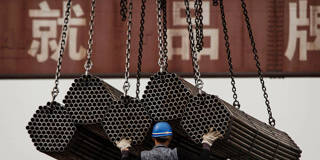China's government has made corporate-sector deleveraging a major goal for 2016, but its state-owned enterprises are still holding far too much debt. The government should now turn to the private sector, which has accumulated savings and needs new investment opportunities, to help clean up the SOEs' balance sheets.
BEIJING – China’s economic slowdown has been the subject of countless debates, discussions, articles, and analyses. While the proposed remedies vary considerably, there seems to be a broad consensus that the illness is structural. But while structural problems, from diminishing returns to capital to the rise in protectionism since the global economic crisis, are certainly acting as a drag on growth, another factor has gone largely unnoticed: the business cycle.
For decades, China’s economy sustained double-digit GDP growth, seemingly impervious to business cycles. But it wasn’t immune: in fact, the six-year slowdown China experienced after the 1997 Asian financial crisis was a symptom of precisely such a cycle.
Today, China’s business cycle has led to the accumulation of non-performing loans (NPLs) in the corporate sector, just as it did at the turn of the century. While the rate of NPLs is, according to official data, lower than 2%, many economists estimate that it is actually more like 3-5%. If they are right, NPLs could amount to 6-7% of China’s GDP.

BEIJING – China’s economic slowdown has been the subject of countless debates, discussions, articles, and analyses. While the proposed remedies vary considerably, there seems to be a broad consensus that the illness is structural. But while structural problems, from diminishing returns to capital to the rise in protectionism since the global economic crisis, are certainly acting as a drag on growth, another factor has gone largely unnoticed: the business cycle.
For decades, China’s economy sustained double-digit GDP growth, seemingly impervious to business cycles. But it wasn’t immune: in fact, the six-year slowdown China experienced after the 1997 Asian financial crisis was a symptom of precisely such a cycle.
Today, China’s business cycle has led to the accumulation of non-performing loans (NPLs) in the corporate sector, just as it did at the turn of the century. While the rate of NPLs is, according to official data, lower than 2%, many economists estimate that it is actually more like 3-5%. If they are right, NPLs could amount to 6-7% of China’s GDP.